Categorias
- iridologia (226)
- Leitura dos olhos (24)
- Software QR (15)
- Blogue (289)
- Ilustração da iridologia (35)
- curso online de iridologia (54)
- iridologia (59)
- Exposição (2)
- Notícias (414)
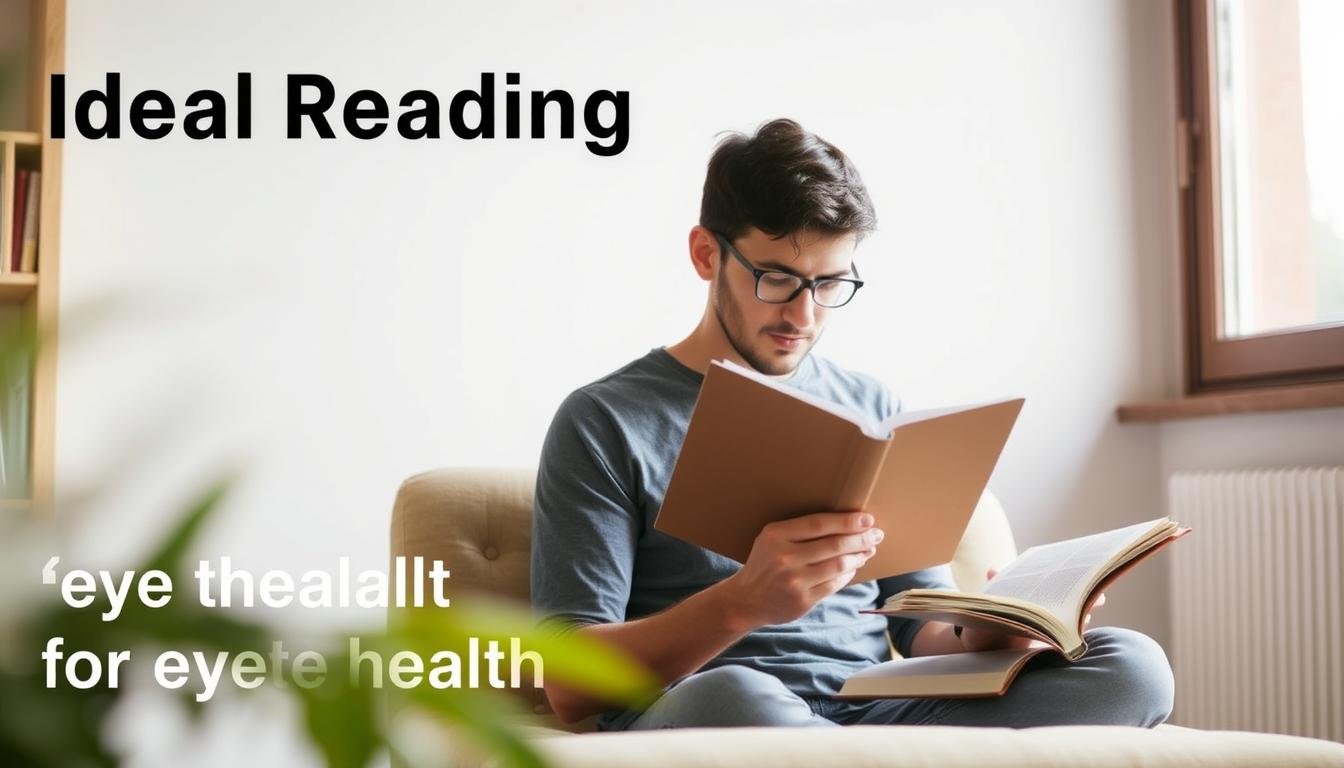
Proper lighting and posture are essential for maintaining eye health while reading
Extended reading sessions, whether on digital devices or traditional paper, can lead to several eye-related issues. Understanding these problems is the first step toward prevention.
Eye strain occurs when your eyes get tired from intense use. According to recent studies, nearly 70% of adults who work with screens experience some form of digital eye strain. Symptoms include sore, tired, burning, or itching eyes.
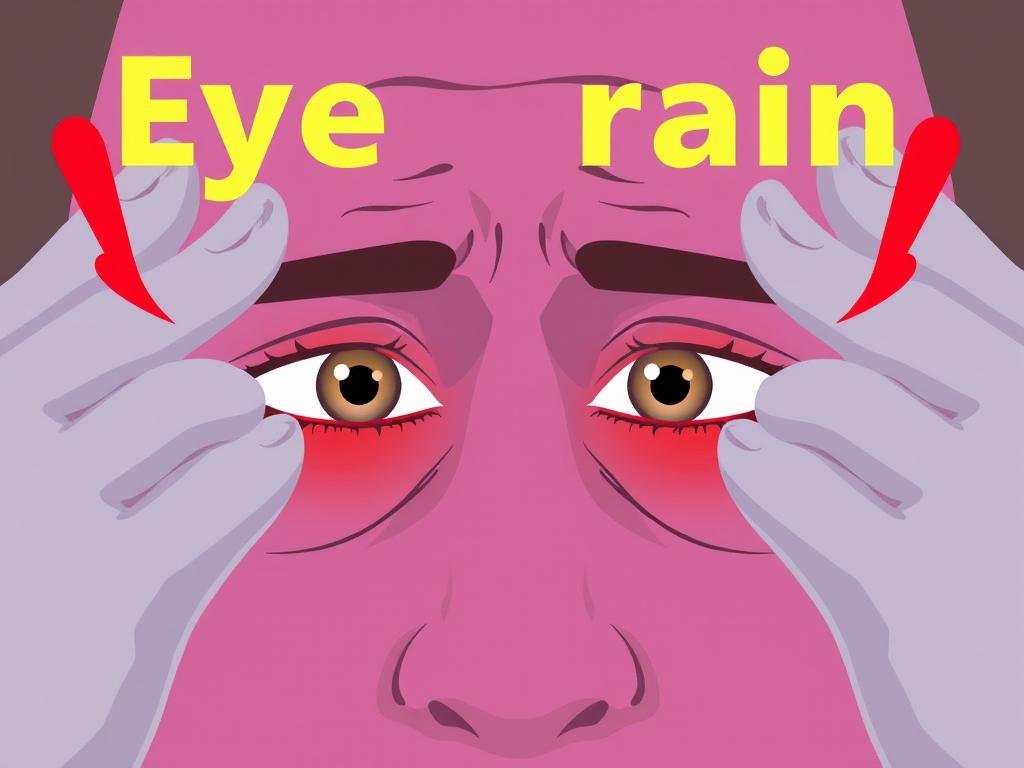
Eye strain can cause redness, irritation, and discomfort
Eye Reading Health: When we concentrate on reading, we tend to blink less frequently—as much as 66% less often than normal. This reduced blinking rate leads to dry, irritated eyes as the tear film evaporates without being regularly replenished.
Focusing on text for extended periods can cause temporary blurred vision. This occurs when the ciliary muscles in your eyes become fatigued from maintaining focus at a fixed distance for too long.
“Many people dismiss eye discomfort while reading as normal, but these symptoms often indicate correctable issues that shouldn’t be ignored.”
Implementing these practical strategies can significantly reduce eye strain and protect your vision during reading sessions.
Proper lighting makes a tremendous difference in reducing eye strain. The ideal lighting situation varies depending on whether you’re reading physical materials or digital screens.
Natural daylight provides the most balanced spectrum for reading. Position yourself near a window with the light coming from over your shoulder or from the side. Avoid direct sunlight, which creates glare and can strain your eyes.
When natural light isn’t available, use a desk lamp with at least a 100-watt bulb. The light should be directed onto your reading material, not shining directly into your eyes. Halogen or LED bulbs that mimic natural daylight are ideal choices.
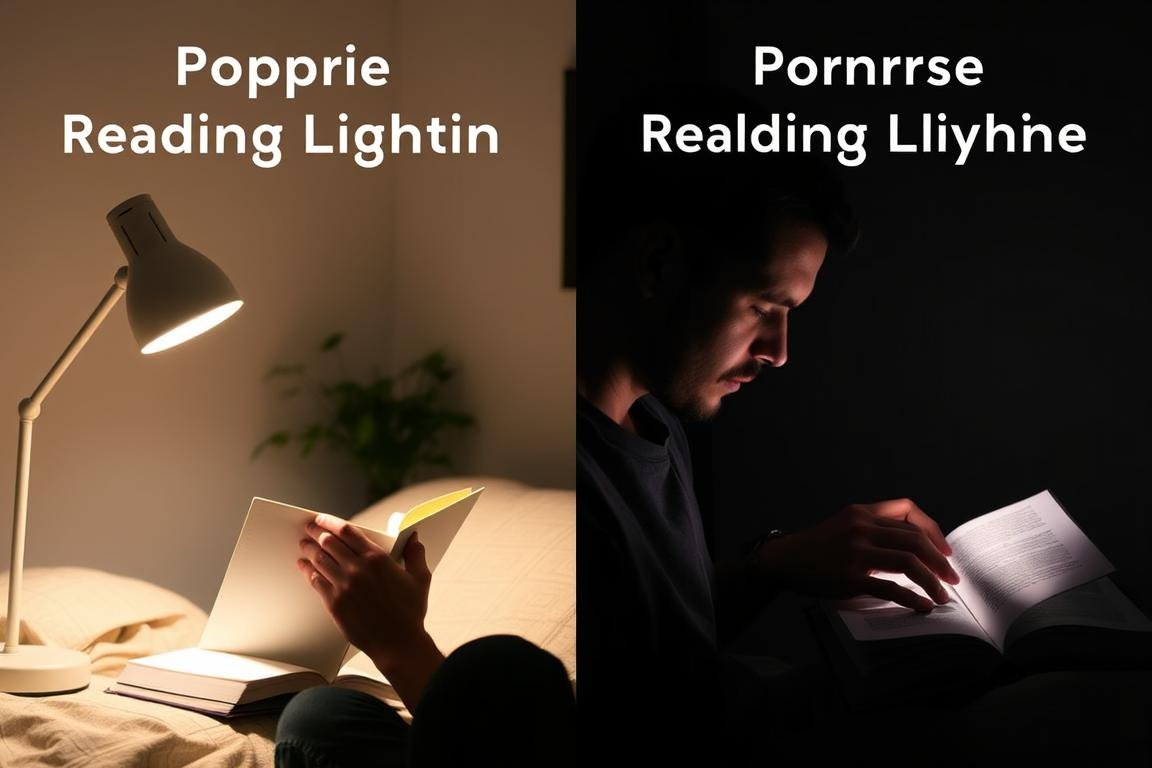
Proper lighting (left) vs. improper lighting (right) for reading
The debate between digital and print reading continues, but research provides some clarity on their respective impacts on eye health.
If you must read on screens, consider using e-ink devices like Kindle, which more closely mimic the experience of reading on paper and don’t emit blue light like tablets and computers.
This rule is endorsed by optometrists worldwide as an effective way to reduce eye strain during extended reading or screen time.
The 20-20-20 Rule: Every 20 minutes, take a 20-second break to look at something 20 feet away. This helps relax the focusing muscles in your eyes and reduces fatigue.
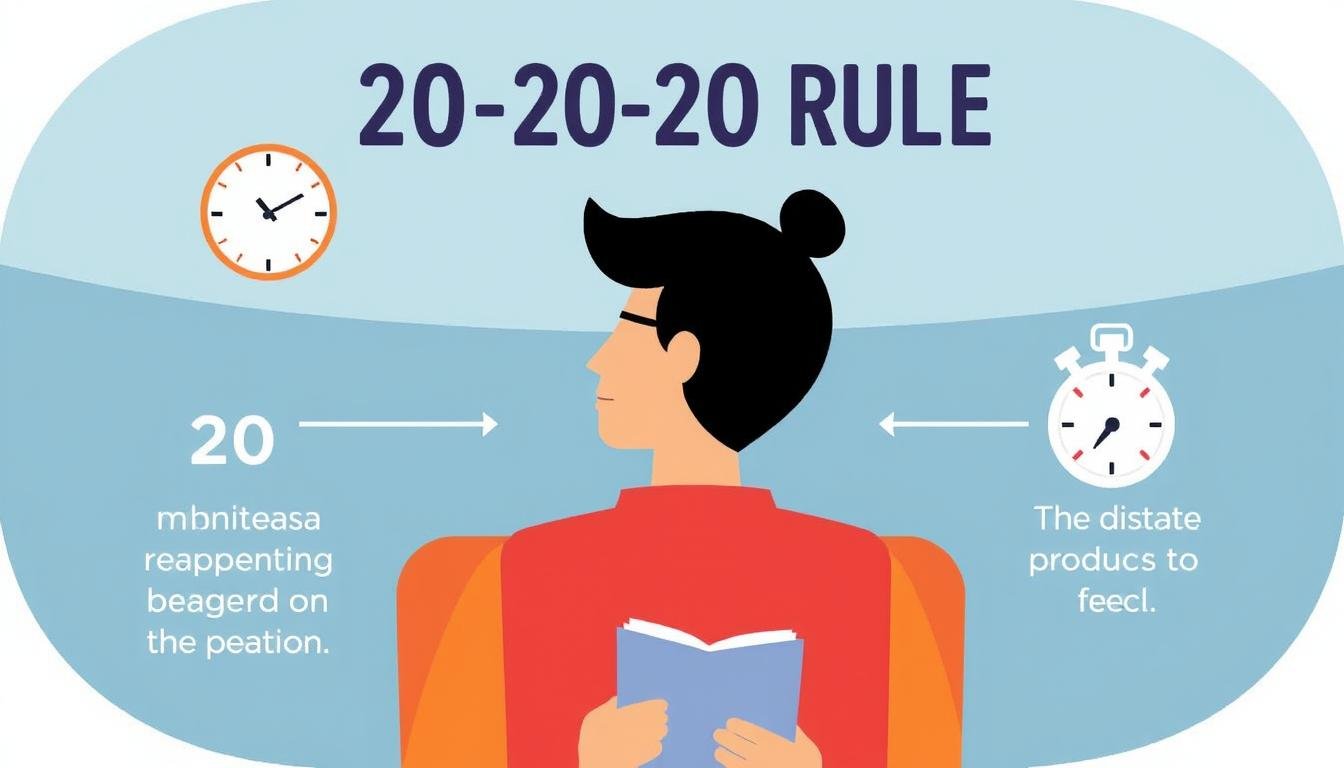
The 20-20-20 rule helps prevent eye strain during extended reading sessions
Your reading position and environment play crucial roles in maintaining eye comfort.
| Reading Medium | Ideal Distance | Recommended Position | Lighting Requirement |
| Physical books | 14-16 inches (35-40 cm) | Slightly below eye level | Directed onto page, not eyes |
| Computer screens | 20-24 inches (50-60 cm) | Eye level or slightly below | Ambient room lighting, reduced screen brightness |
| Smartphones/tablets | 16-18 inches (40-45 cm) | Arm’s length, slightly below eye level | Reduced screen brightness, anti-glare screen |
If you’re following these tips but still experiencing eye discomfort while reading, it may be time for a professional assessment. Our specialists can evaluate your vision and recommend personalized solutions.
These simple exercises can help relieve eye strain and improve focus during reading sessions. Try to incorporate them into your routine, especially during longer reading periods.
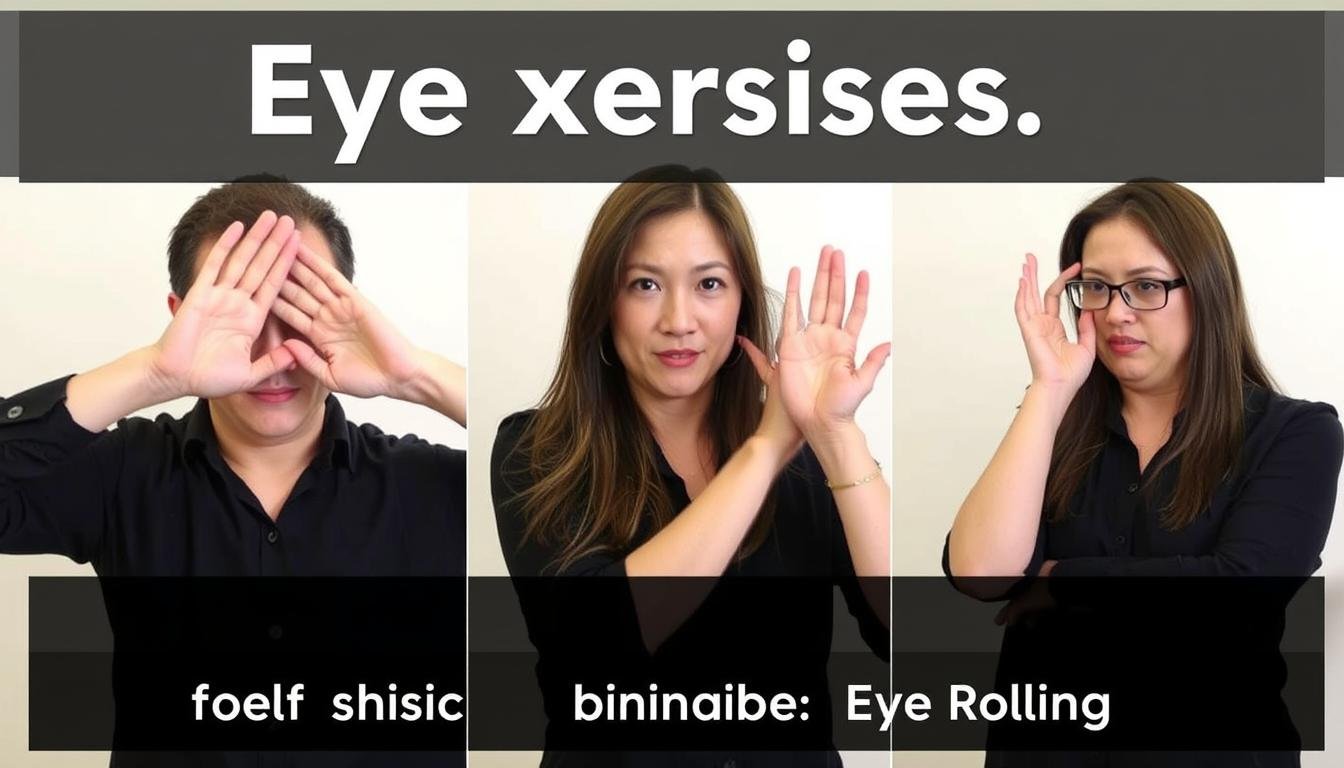
Regular eye exercises can help reduce fatigue and maintain eye health
Steps:
This exercise helps relax eye muscles and provides relief from strain. Practice it every hour during intensive reading sessions.
Steps:
This exercise strengthens eye muscles and improves their ability to adjust focus between different distances—a skill that deteriorates with prolonged reading.
Steps:
This exercise helps improve eye mobility and flexibility, reducing the stiffness that develops during fixed-focus activities like reading.
Modern technology offers several tools to reduce eye strain and protect your vision while reading, especially on digital devices.
Blue light from digital screens may contribute to eye strain and potentially disrupt sleep patterns by suppressing melatonin production.
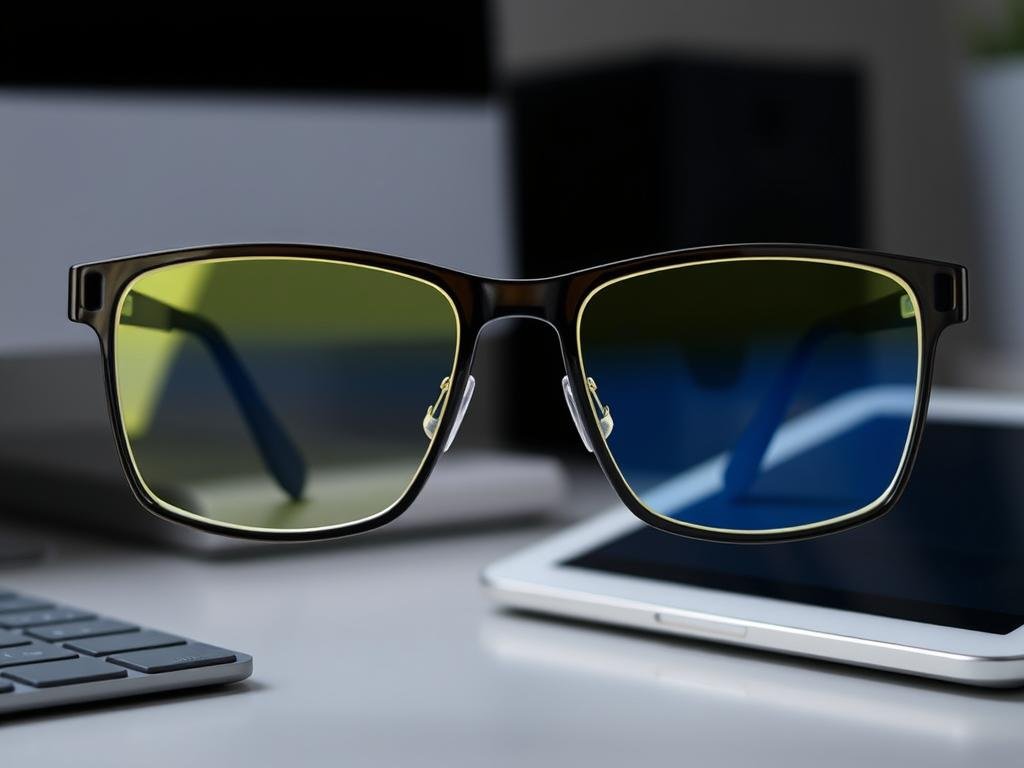
Blue light filtering glasses can reduce digital eye strain
Eye Reading Health: These specialized glasses filter out blue light from screens. Look for pairs that block 30-60% of blue light without significantly distorting colors. They’re particularly useful for evening reading when blue light exposure can affect sleep quality.
Eye Reading Health: Most modern devices include built-in blue light filters (Night Shift on iOS, Night Light on Android, Night mode on Windows). These can be scheduled to activate automatically in the evening hours. Third-party apps like f.lux adjust your screen’s color temperature based on the time of day.
If you enjoy digital reading, your choice of device can significantly impact eye comfort.
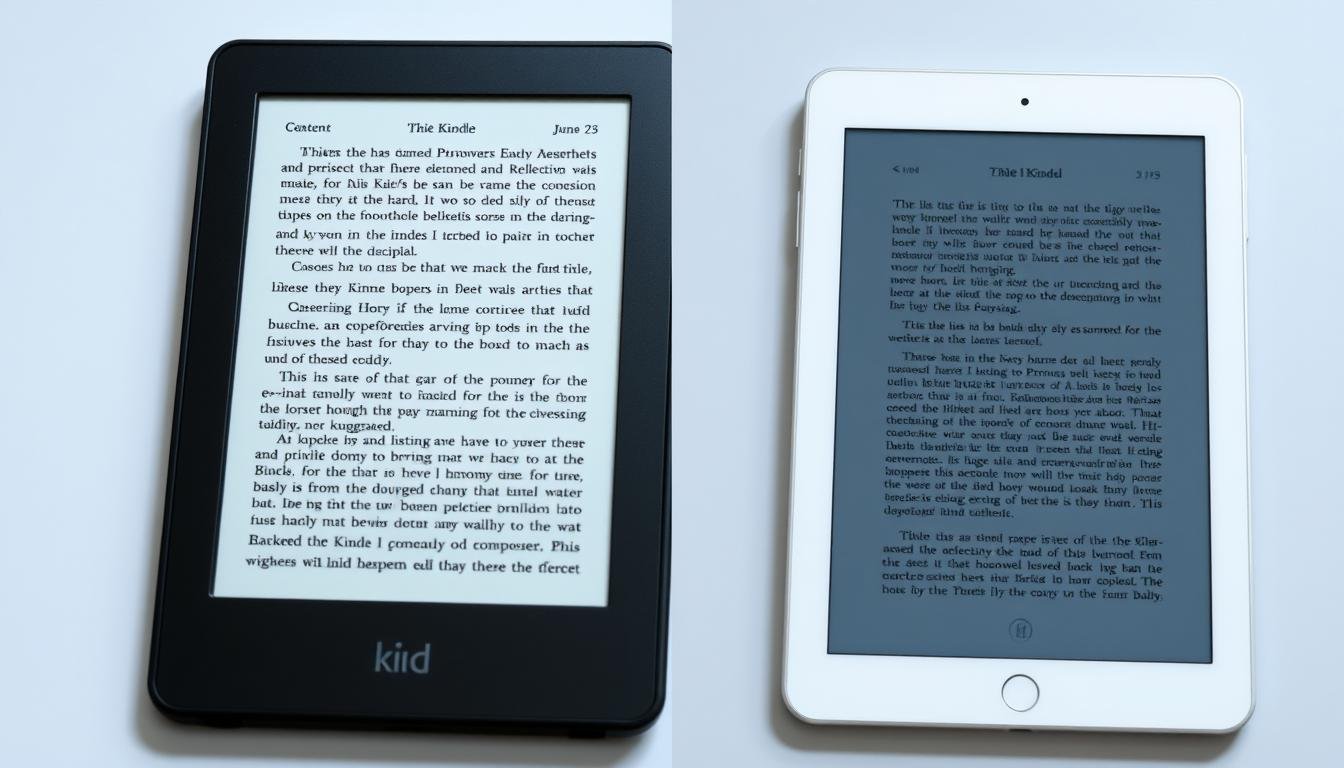
E-ink readers (left) cause less eye strain than backlit tablets (right)
| Recurso | E-Ink Readers | Tablets/Smartphones |
| Fonte de luz | Reflected light (like paper) | Backlit screen (emits light) |
| Blue Light | Minimal to none | Significant emission |
| Refresh Rate | Low (no flickering) | High (potential for imperceptible flicker) |
| Eye Strain Level | Low (similar to paper) | Mais alto |
| Battery Life | Weeks | Hours |
Several applications can help optimize text display for easier reading:

Text customization tools can significantly improve reading comfort
What you eat and how you live can significantly impact your eye health and reading comfort.
Certain nutrients are particularly beneficial for maintaining eye health and preventing vision problems.

Foods rich in eye-healthy nutrients like lutein, zeaxanthin, and omega-3 fatty acids
Proper hydration is essential for maintaining the tear film that keeps your eyes comfortable during reading. Aim to drink at least 8 glasses of water daily, and consider these additional tips:
Did you know? Studies show that omega-3 fatty acid supplements can increase tear production by up to 30% in people with dry eye syndrome, making reading more comfortable.
Eye Reading Health: Contrary to popular belief, reading in dim light does not permanently damage your eyes. However, it can cause temporary eye strain and fatigue as your eyes work harder to focus. While your vision will recover after resting, it’s still best to read in adequate lighting to prevent unnecessary strain.
Adults who read extensively or work with screens should have a comprehensive eye exam at least once every year. This allows for early detection of vision changes and eye conditions that might be exacerbated by intensive reading. Children who are avid readers should also have annual exams to ensure proper vision development.
Using reading glasses when you don’t need them won’t damage your eyes, but it may cause temporary discomfort or headaches. Reading glasses are designed to help people with presbyopia (age-related farsightedness) focus on close objects. If you don’t have this condition, the extra magnification could strain your eyes unnecessarily.
Eye exercises cannot correct refractive errors like nearsightedness or farsightedness, nor can they reverse age-related vision changes. However, they can help reduce eye strain, improve focus flexibility, and enhance eye muscle coordination, making reading more comfortable. They’re best viewed as maintenance rather than correction.

Regular eye examinations are essential for maintaining optimal reading vision
Eye Reading Health: Reading enriches our minds and lives, but it shouldn’t come at the cost of our eye health. By implementing the strategies outlined in this guide—proper lighting, ergonomic setups, regular breaks, eye exercises, and appropriate technology—you can enjoy reading while minimizing strain and protecting your vision for years to come.
Remember that eye health is part of your overall wellness. Proper nutrition, hydration, and regular eye examinations play crucial roles in maintaining healthy vision. Don’t wait until you experience problems to take action—preventive care is always the best approach.

With proper eye care, reading can remain a comfortable, enjoyable activity throughout life
If you’re experiencing eye discomfort while reading or it’s been more than a year since your last eye exam, don’t wait for symptoms to worsen. Our eye care specialists can assess your vision, recommend personalized solutions, and help you maintain optimal eye health for all your reading activities.
SOFTWARE DE IRIDOLOGIA MAIKONG Instalação e operação
